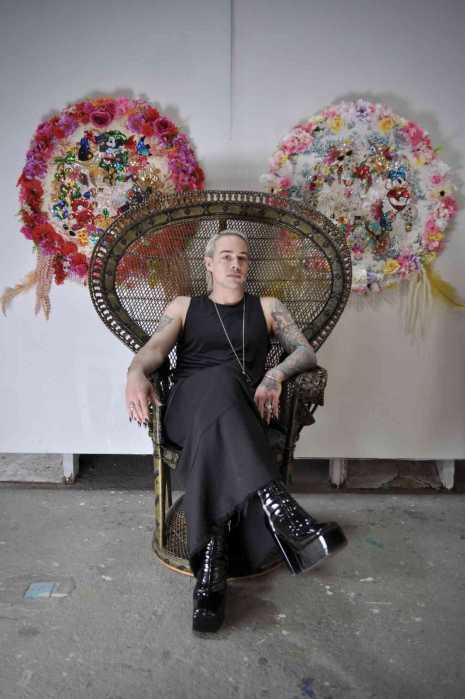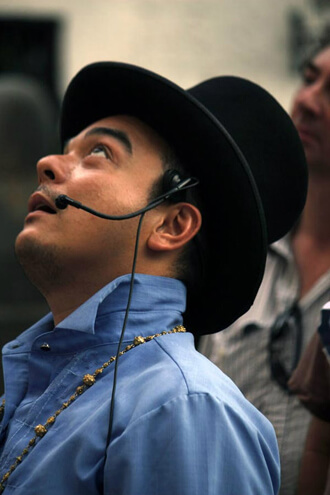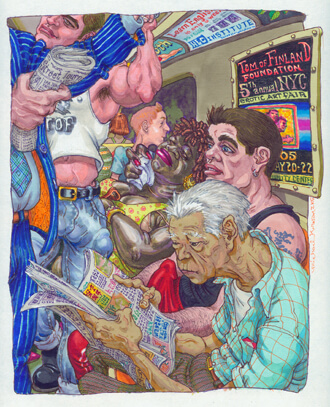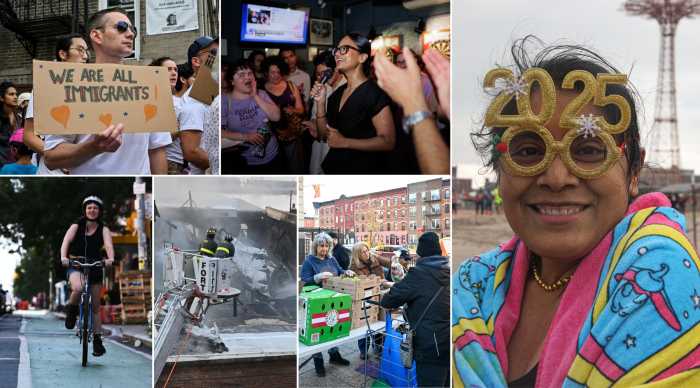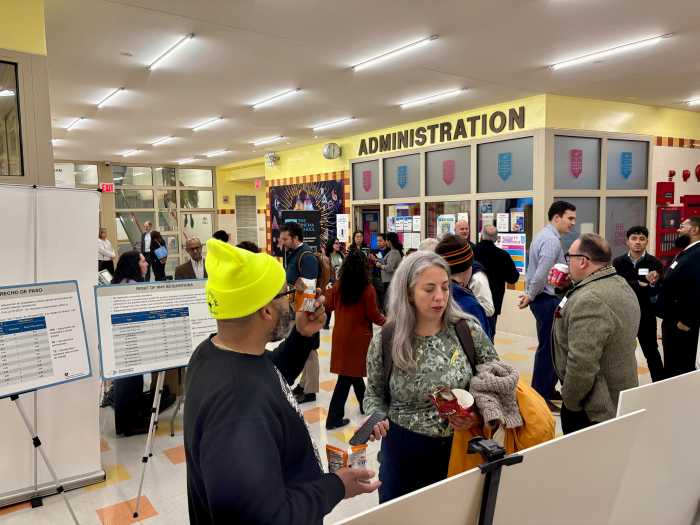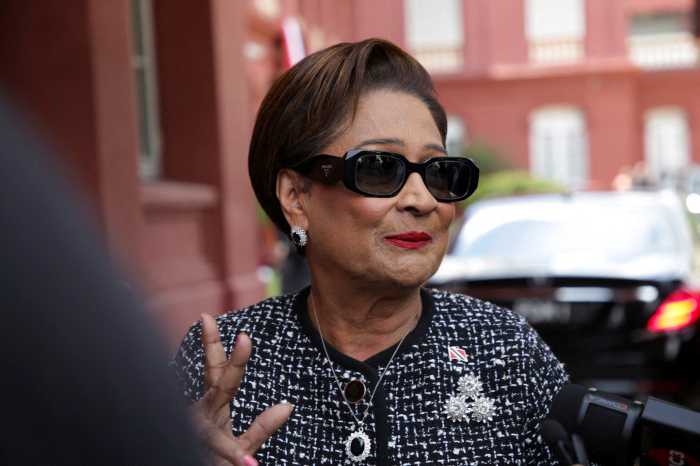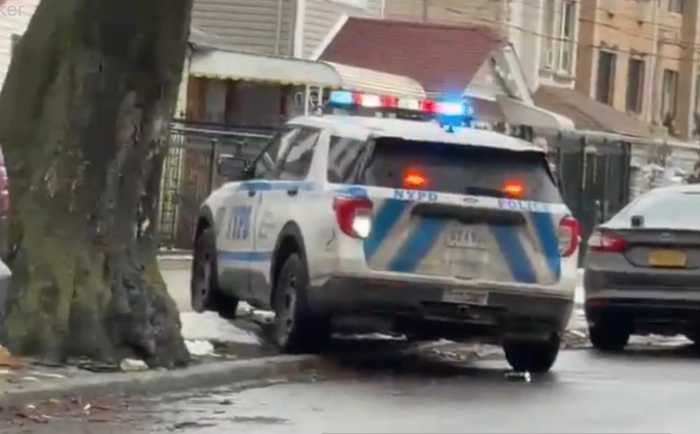When playwright/actor Charles Ludlam died at age 43 in 1987, a unique, important creative light was extinguished. One of the most striking achievements of his too-brief career was “Galas,” his satirical take on the life of the ultimate opera diva, Maria Callas. I saw it in its original iteration on Sheridan Square in his namesake theater and recall howling with laughter over his hysterical entrance from a cardboard train, carrying a birdcage (as one does), and then fussing over that ultimate opera diva prop, a pet dog, which, hilariously, was nothing more than a vintage fur piece. You would barely know that, however, such was this also master puppeteer’s skill at making a found object come to vivid canine life.
Lending him side-splittingly funny support was Ludlam’s partner in love and work, Everett Quinton, as his insanely protective maid, Bruna (think a Sicilian Judith Anderson as Mrs. Danvers in “Rebecca”). Well, Ludlam is sadly gone, but Quinton is joyfully very much with us, and it was at the request of Mark Erson, the Lutheran pastor of St. John’s and artistic director of Theatre at St. John’s on Christopher Street, that Quinton is reviving the play, now starring in the title role, which should be choice.
St. John’s is my neighborhood church and I have long been impressed by the intriguingly wide range of activities, apart from worship and memorial services, going on there. Founded in 1855, in a landmark building that dates back to 1821, the church chose as its ninth pastor Erson, who is proudly gay and committed to serving his entire community, bringing the arts to his parish and beyond, and, always and hopefully, building a bigger congregation at this most beautiful and welcoming historical space. Born on Staten Island to a Lutheran minister, Erson’s was a winding path on the way to the ministry, encompassing careers as an actor, producer, and playwright, before entering the General Theological Seminary here in New York, in 2005.
“I am happily married to my high school sweetheart, Scott Jordan,” Erson told me as we sat down at Cowgirl Hall of Fame in the West Village. “When we met, no one was out, and I could hardly believe my luck — he was so handsome, funny, and kind! It took a while, but I always knew I wanted to marry him. He’s a great partner and an immense help to me here.
“I guess I always basically knew I was gay, and I was given this position with the hope that, as an out gay pastor, I would be able to really reach out to our community, as well as people in the arts, so many of whom live around here. We have, at this moment, a wide range of different programs, from our well-attended AA meetings and AIDS and gay youth outreach programs to a number of different theater groups who are able to develop and perform their work here.”
As a lifetime theater geek, Erson adored the work of Ludlam, himself a longtime Village resident, and in addition to producing “Galas,” he is also acting in it, playing the Aristotle Onassis character. He welcomes all to come see the play and also become involved in his vibrant church and its fundraising activities. “We got funds to put up a new, attractive fence, and now want to raise money for a new more appropriately period front door.”
Cady Huffman is one of the best-loved performers in the business for, besides her huge Tony-willing talent, there is the fact of her unfailingly real and warm lovability — rare, indeed, one that I associate with such priceless, essential showstoppers as Joan Blondell and early Ginger Rogers (before she got too self-important).
It’s always salutary when an actress stretches herself and this she is doing with a bright new show she’s been developing with Will Nunziata, “Miss Peggy Lee: In her Own Words and Music.” One of the last century’s most beloved songstresses, Lee is not as well known as the prolific songwriter she was, penning more than 100 tunes, including her signature “Fever,” “Its a Good Day,” “Mañana” and those featured in the movie “Lady and the Tramp.”
Huffman, a lifelong fan, had a picture of Lee on her wall for years and is bringing a new and very deep understanding of the complexities of the singer.
“I can relate to her in so many ways, some which even surprised me,” she told me. “And I feel really good about this show which, I must emphasize, is not a strict impersonation of her. Peggy has brought out something new in me, and I’m so excited to show it and share it.”
As the show is still in a workshop phase, I was forbidden to review it. But I caught it and can assure you, it’s both moving and a lot of fun, and Huffman’s “Fever” absolutely slayed the audience. After a sold-out run, it will return to the Green Room 42, July 24 and July 31 at 7 p.m.
The Leslie-Lohman Museum of Gay and Lesbian Art is really the only major Manhattan space to celebrate queer art, and the Leslie-Lohman Foundation, like Pride itself, is celebrating 50 years. In observance of that, there are three celebratory shows: “Being Seen Makes a Movement Possible, 2019” (Joan E. Biren’s photos of the LGBQT movement over the past 40 years mounted on the building’s façade, through May 2020), “Y ‘all Better Quiet Down” (art and memorabilia either taken from or directly inspired by queer liberation, through July 21), and “Art After Stonewall: 1969-1989” (dominated by David Hockney’s dazzling life-size portrait of Divine, through July 21).

In observance of the book “Pride: Fifty Years of Parades and Protests From the Photo Archives of The New York Times,” the museum hosted a lively event on June 13 featuring Times staffers David Kaufman, who wrote the text, photo editor Cecilia Bohan, senior photographer Sara Krulwich, and photographer James Estrin, in conversation with Nelson Santos, Leslie-Lohman’s interim director of curatorial programs.
Bohan was especially eloquent detailing the hunt through the Times morgue for pertinent gay images, which were not always easy to find, given the Times’ long-held indifference to anything queer. The Stonewall Uprising itself yielded only four shots from a staff photographer, shot from a car. The newspaper went through a 360-degree change with the 1992 appointment of a new publisher, Arthur Ochs Sulzberger, Jr., who made it clear that the bad old policy of The Times, which even eschewed the very word “gay,” was a thing of the past, ushering in a new era of full coverage, including queer weddings.
Feisty, diminutive, out lesbian Krulwich’s first reaction to an early iteration of “Pride” was, “What is this, a book full of smiling people?,” and exhorted a deeper delving for images of more range.
“I always liked to get as full and inclusive a shot as I could,” she remarked, “to show the wonderful diversity of the crowd during Pride.”
To achieve this, Krulwich would find a strategic spot on the parade route where she knew there would be a momentary pause in the marching, and ask the nearest store, pharmacy, whatever for the loan of a ladder, which she would have hauled out into the middle of Fifth Avenue and then climb it and snap all that ebullient, diverse humanity.
GALAS | Theatre at St. Johns in Association with Yorick Theater Company | 81 Christopher St., btwn. Seventh Ave. S. & Bleecker St. | Jun. 16-17, 19-22, 25-26, 28 at 8 p.m. | $25 at galas.brownpapertickets.com
CADY HUFFMAN | “Miss Peggy Lee” | The Green Room 42 | 570 10th Ave. at 42nd St., inside Yotel, fourth fl. | Jul. 24 & 31 at 7 p.m. | $37.50-$77.50 at ci.ovationtix.com/34878/production/1010064
THE LESLIE-LOHMAN MUSEUM OF GAY AND LESBIAN ART | 26 Wooster St., btwn. Grand & Canal Sts. | Wed., Fri.-Sun., noon-6 p.m.; Thu., noon-8 p.m.; closed Pride Sunday | leslielohman.org



